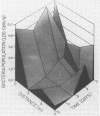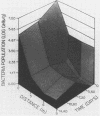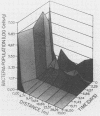Abstract
Prospective experimental field evaluation of genetically engineered microorganisms, such as microbial pest control agents, raises issues of how to properly ascertain their fate and survival in the environment. Field trials with recombinant organisms must reflect requirements for sampling and monitoring. Field trials were conducted at Tulelake, Calif., to monitor the numbers of viable cells of a nonrecombinant strain of Pseudomonas syringae that entered the atmosphere and landed on plants and soil during and after an aerosol spray application. An exponential decrease in numbers of viable cells deposited at increasing distances from three sprayed plots was observed. The relative rate of survival of cells sprayed directly on plants was more than 10 times higher than that of cells dispersed through the air to similar adjacent plants. Results are being used to gain experience with the characteristics of a release site that influence containment or dispersal and to develop appropriate sampling methodologies for evaluating survival and dispersal characteristics of genetically engineered bacteria released into the environment. The ability to make predictions about microbial dispersal and survival will reduce the uncertainties associated with environmental releases of recombinant organisms.
Full text
PDF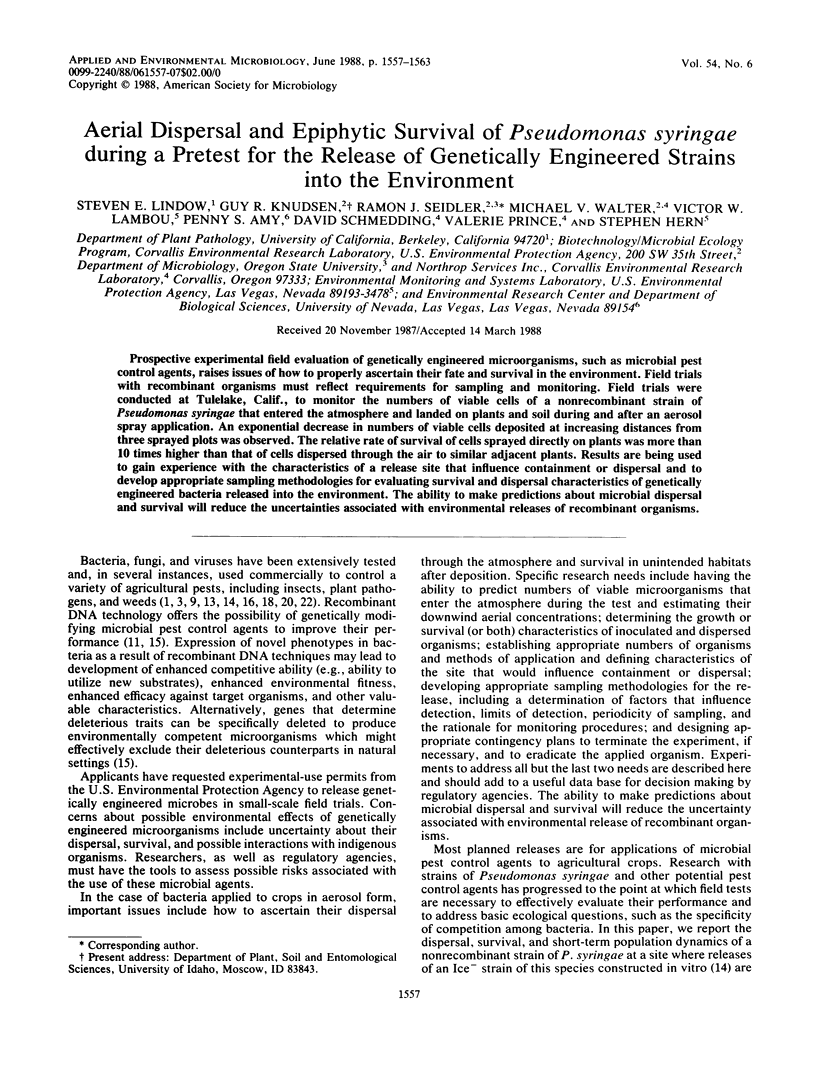
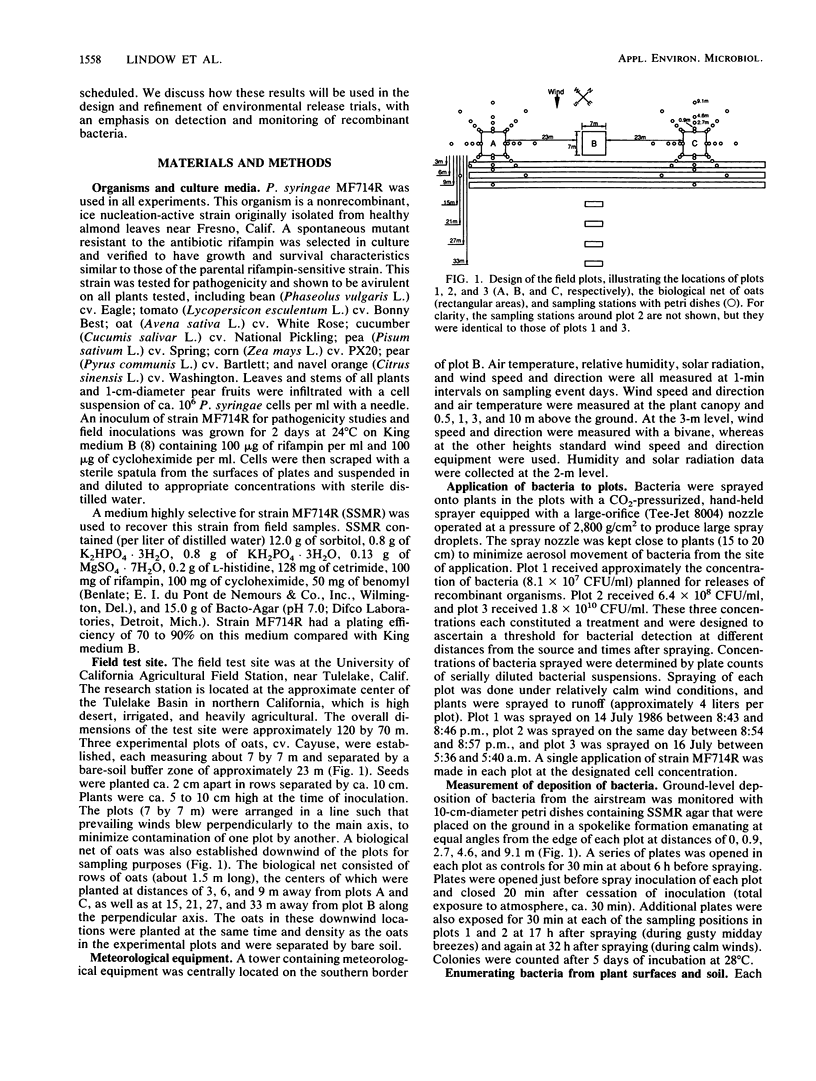
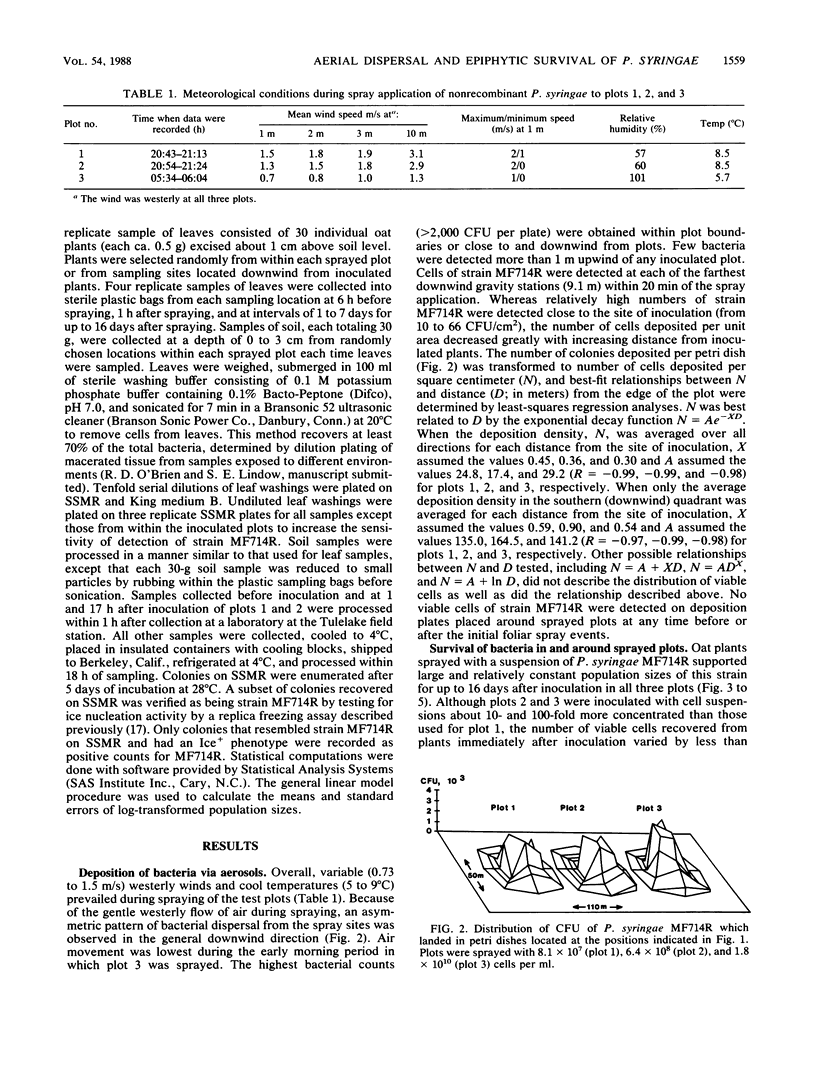
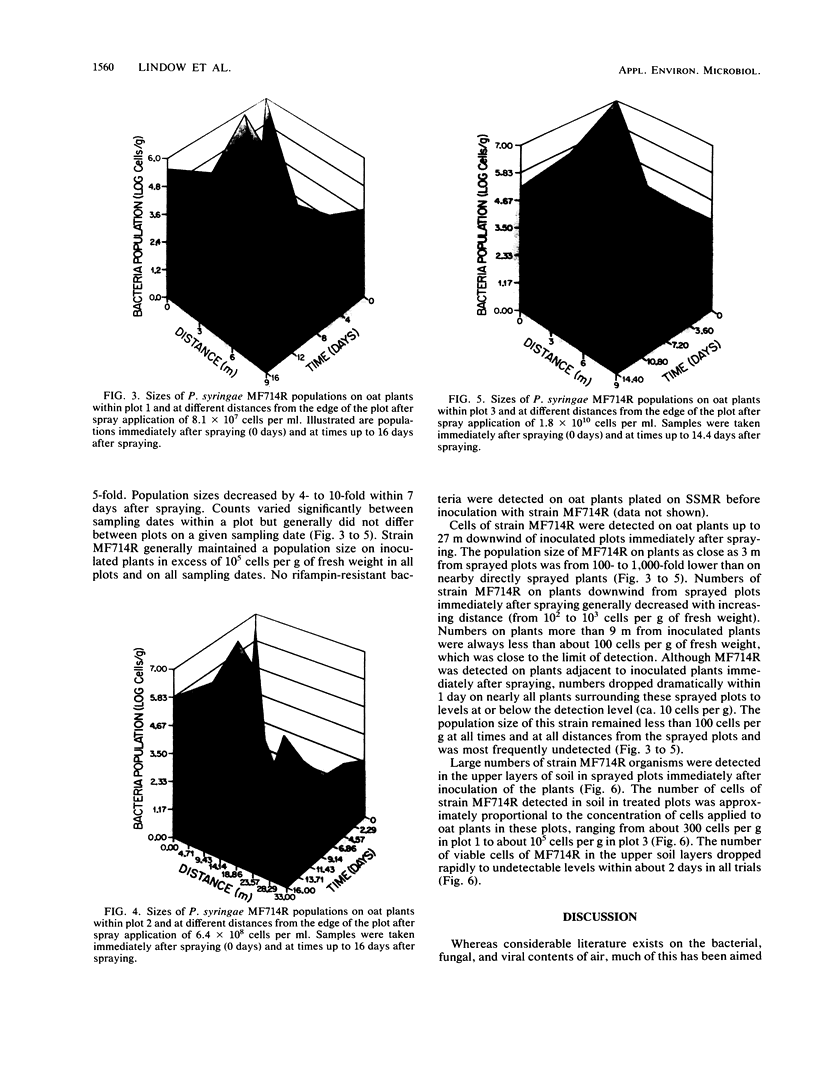
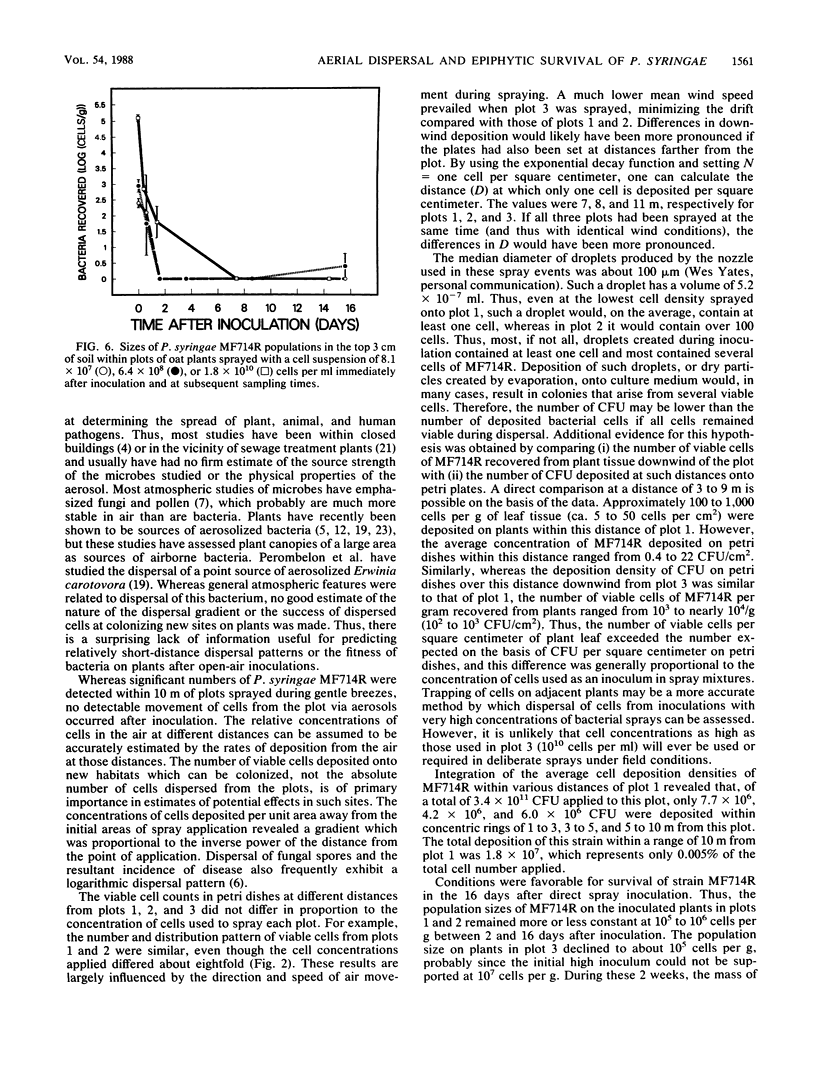
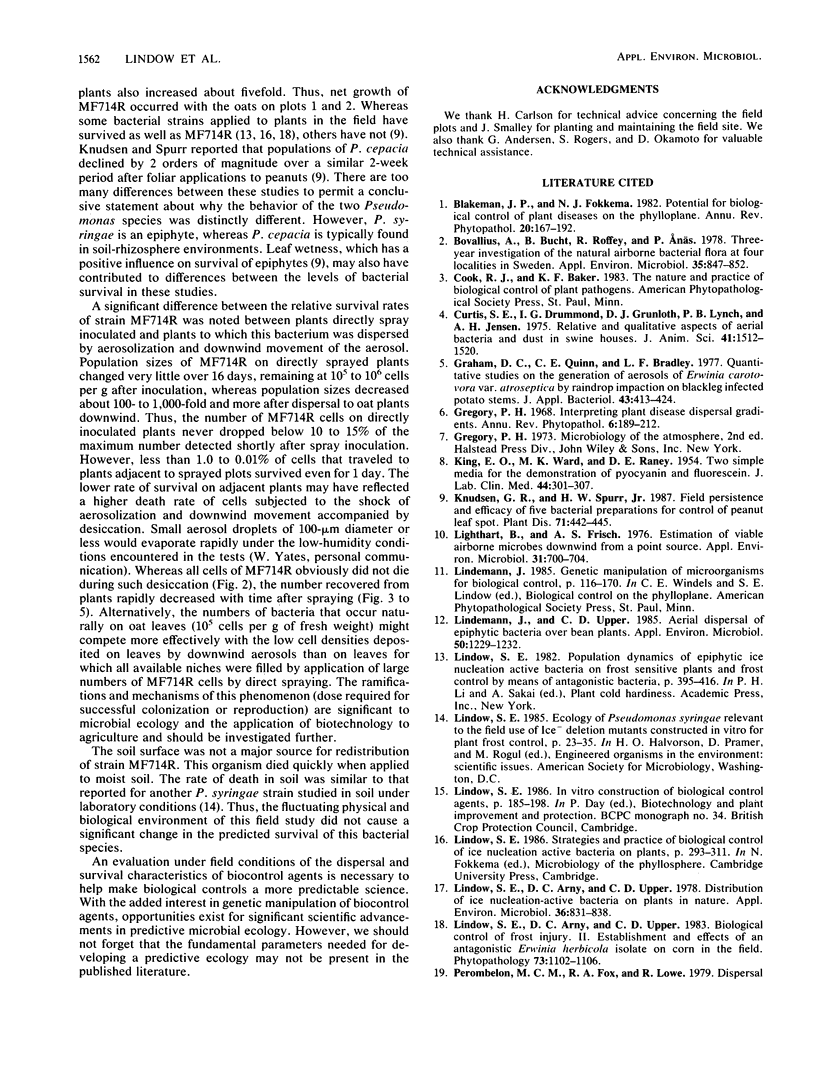
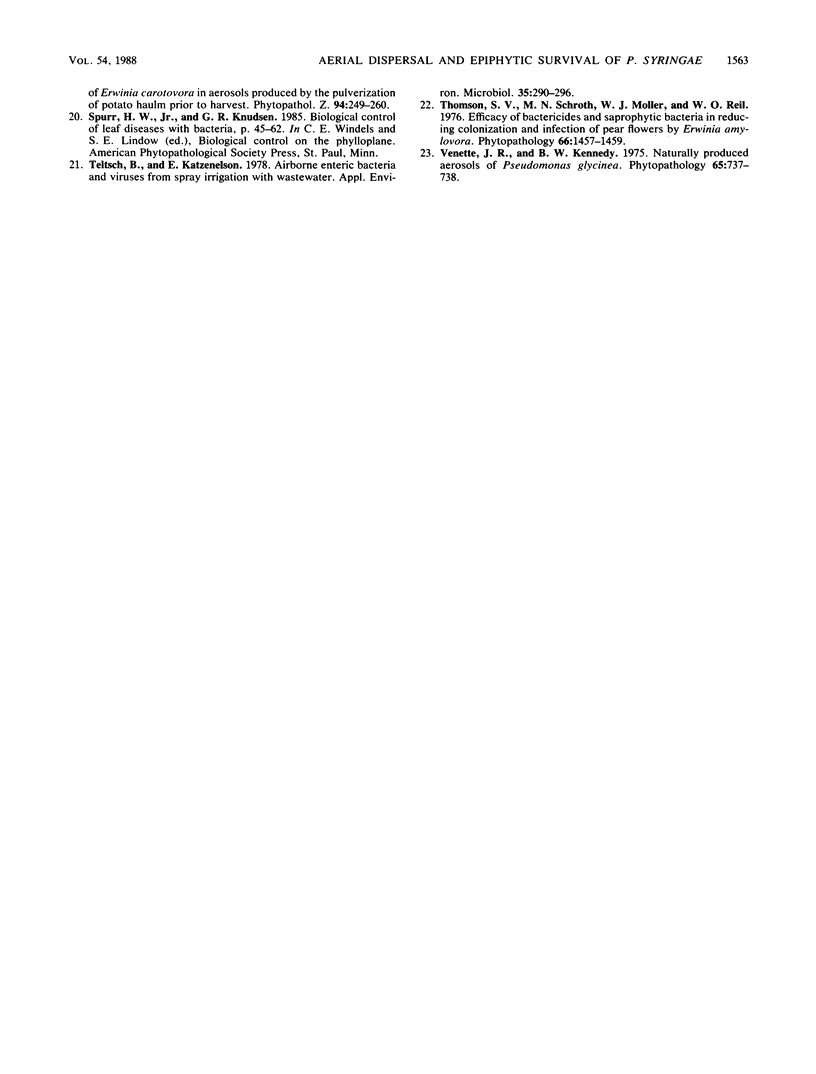
Images in this article
Selected References
These references are in PubMed. This may not be the complete list of references from this article.
- Bovallius A., Bucht B., Roffey R., Anäs P. Three-year investigation of the natural airborne bacterial flora at four localities in sweden. Appl Environ Microbiol. 1978 May;35(5):847–852. doi: 10.1128/aem.35.5.847-852.1978. [DOI] [PMC free article] [PubMed] [Google Scholar]
- Curtis S. E., Drummond J. G., Grunloh D. J., Lynch P. B., Jensen A. H. Relative and qualitative aspects of aerial bacteria and dust in swine houses. J Anim Sci. 1975 Nov;41(5):1512–1520. doi: 10.2527/jas1975.4151512x. [DOI] [PubMed] [Google Scholar]
- KING E. O., WARD M. K., RANEY D. E. Two simple media for the demonstration of pyocyanin and fluorescin. J Lab Clin Med. 1954 Aug;44(2):301–307. [PubMed] [Google Scholar]
- Lighthart B., Frisch A. S. Estimation of viable airborne microbes downwind from a point source. Appl Environ Microbiol. 1976 May;31(5):700–704. doi: 10.1128/aem.31.5.700-704.1976. [DOI] [PMC free article] [PubMed] [Google Scholar]
- Lindemann J., Upper C. D. Aerial Dispersal of Epiphytic Bacteria over Bean Plants. Appl Environ Microbiol. 1985 Nov;50(5):1229–1232. doi: 10.1128/aem.50.5.1229-1232.1985. [DOI] [PMC free article] [PubMed] [Google Scholar]
- Lindow S. E., Arny D. C., Upper C. D. Distribution of ice nucleation-active bacteria on plants in nature. Appl Environ Microbiol. 1978 Dec;36(6):831–838. doi: 10.1128/aem.36.6.831-838.1978. [DOI] [PMC free article] [PubMed] [Google Scholar]
- Little J. B., Kennedy A. R., McGandy R. B. Lung cancer induced in hamsters by low doses of alpha radiation from polonium-210. Science. 1975 May 16;188(4189):737–738. doi: 10.1126/science.1124396. [DOI] [PubMed] [Google Scholar]
- Teltsch B., Katzenelson E. Airborne enteric bacteria and viruses from spray irrigation with wastewater. Appl Environ Microbiol. 1978 Feb;35(2):290–296. doi: 10.1128/aem.35.2.290-296.1978. [DOI] [PMC free article] [PubMed] [Google Scholar]



